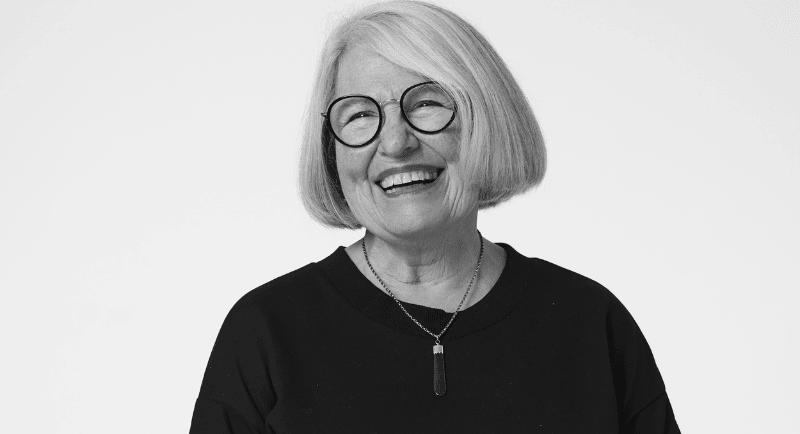The industry has been finding solutions to striking a balance between responsible AI use amid constant development with human creativity.
Tech labs and companies have developed sophisticated platforms that allow creators to make content they can only dream of in minutes, such as Midjourney and Google Veo 3. Meanwhile, developers and engineers have made solutions to ensure AI is used ethically and responsibly, including the Content Credentials and Meta’s efforts to label AI-generated content.
Australian marketers have been keen to adopt Generative AI tools, but only 8% have reached advanced maturity, leadership, planning, and deployment capability while 52% fall into the beginner category, with interest and few implementations or frameworks, according to The Australian Centre for AI in Marketing (ACAM) AI Readiness Benchmarking Report.
Mediaweek spoke to Houston Group’s Alex Creamer, Colleen Ryan from TRA, and Harry Preston of MBCS to examine the role of AI as a support tool in the creative process and its place in the future of the industry.

Alex Creamer: ‘AI may affirm, inform and support— but true originality that builds new relationships with new audiences, will still be a human endeavour.’
‘For some it’s terrifying, for others it’s tantalising’
Creative Director at Houston Group, Alex Creamer, said that AI has reshaped the industry in supporting craft, accelerating production, and replicating human creativity and interaction.
“For some it’s terrifying, for others it’s tantalising.”
He acknowledged that while AI has provided positives, such as democratising the creative industry, frictionless connections between customers and automating day-to-day work, it has the potential to damage the perceived value of creativity in both cost and skill.
Creamer noted that the future of brand and content creation is “likely somewhere in the middle.”
He said that when used ethically, Generative AI can offer new pathways of innovation and productivity often inaccessible to many and enable better work in the process.
“But the principles behind good brand building are the same – a unique POV and personality are essential, with a strong connection to people and place.
“AI may affirm, inform and support— but true originality that builds new relationships with new audiences, will still be a human endeavour,” he added.
For Colleen Ryan, Partner at insights agency TRA, human imagination born from personal and repeatedly reorganised mash-up of memory results in creativity.
“Sure, AI is ‘creative’, but it’s not idiosyncratic in the same way as human imagination. AI doesn’t dream or surprise itself. It might ‘hallucinate’ – but not in the same way as humans.
“Great brand work comes from embodied imaginative ideas, absurd and contrary juxtapositions that only an imaginative human mind could stitch together.
“Creativity is not just output generation, it’s imaginative synthesis, deeply tied to memory, subjective experience and embodied meaning – aka the human experience.”
Managing Director of MBCS, Harry Preston, said that while AI is powerful and influential, “it’s not visionary”.
“AI can help us with speed to market, better personalisation, and even provide a platform to ignite creativity – but it can’t replace gut feeling that tells you ‘This idea hits different’.
“The future of content isn’t man vs machine – it’s man with machine. AI should support creative ambition, not sterilise it.
“Brands who rely too heavily on AI risk producing homogenised content that gets lost. The bold ones will still come from people who know how to make culture, not just content.”
Using AI for good
Over-reliance on AI will have wide-ranging impacts on the industry, from creative to strategy, but Creamer highlighted “brain drain” as a lesser-discussed concerned.
“As a junior creative, I learnt so much from note-taking or sifting through competitor audits and books. If Otter or ChatGPT had been in my life then, I surely wouldn’t have had the same learning experience, or perhaps I’m just getting old.”
“Optimistically, this could lead to people developing new skills with more time to focus on innovation and creative thinking. Pessimistically, there’s a risk we cut junior roles in favour of efficiency at the top. Losing touch with new emerging demographics and ideas.”
Creamer pointed to Howatson & Co’s EXHIBIT A-I work for law firm Maurice Blackburn as a successful early work of text-to-image generation and helped tell the stories of those who can’t.
He also highlighted Publicis Groupe agency Marcel’s Les Bleues’ Highlights and how it used deepfake tech to shift the perception of women’s football.
“Brilliant human-centred ideas that used AI for good,” he added.

Colleen Ryan: ‘This means the jury is still out on the promise of AI as a tool for helping customers, whether that is customer experience, better engagement, innovation or advantages in pricing.’
Transparency and owning the narrative
Can brands use AI ethically and transparently developed connection with customers? Ryan cited TRA research on Australian and New Zealand attitudes and values toward progress.
96% of people said honesty was the most important thing brands can do to help people make progress. But while people believe that AI helps companies make progress, they don’t think it helps customers as much. The report noted 13% disagreed that AI mainly benefits businesses, not consumers.
“This means the jury is still out on the promise of AI as a tool for helping customers, whether that is customer experience, better engagement, innovation or advantages in pricing,” Ryan said.
She noted that a third believe AI will help brands understand customers and help people engage with them better, while another third disagree, and the rest are undecided.
“Transparency and owning the narrative is key for brands to address this, by authentically demonstrating the value they’re passing on because of the advantages AI is giving companies.”
‘Great brand storytelling comes from truth, bravery, and a point of view’
Can brands strike a balance AI AI-generated content and authentic brand storytelling? Preston noted that automation is great at speeding up processes and streamlining mundane tasks, but can impact originality.
“People can quickly tell if a brand is being inauthentic. You can’t A/B test your way to a story that moves someone. Great brand storytelling comes from truth, bravery, and a point of view.
He noted that a brand voice needs to stand for something. Preston said: “Marketers who get this right will use automation for the everyday and save the real creativity for the moments that matter the most.”
With growing AI adoption, Preston urged brands not to chase efficiencies. He explained: “AI should serve the idea, not the other way round. The moment you let automation lead creative decisions, you risk slipping into a sea of sameness.”
He noted that brands should protect their tone of voice and creative DNA and use AI where it makes sense, such as automation and accelerating processes.
“Always ask yourself, ‘Is this making us bolder, or just quicker?’ Guardrails matter. So does taste. And while AI can do a lot, it can’t tell you when something’s iconic. That’s still a human job.”
Preston added that from an ethical perspective, transparency with colleagues, clients, and partners on how AI is used is necessary.
“Human care needs to remain in ensuring brand identity is protected, and we must avoid using AI models trained on copyrighted material to ensure original and legally compliant content.
“It’s also critical that any AI-generated content is monitored for bias. It must support fairness and inclusivity that reflects the diversity of a brand’s audience.”

Harry Preston: ‘AI should serve the idea, not the other way round. The moment you let automation lead creative decisions, you risk slipping into a sea of sameness.’
Skilling up and shaping the future with AI
For all three, the future of marketing and AI is intertwined with creativity and productivity.
Ryan believes the future of AI will be in augmented imagination and using AI “as a tool to extend, not replace, our imagination and emotional nuances.”
“The human brain is only high performing in short periods, a couple of hours, for example. When we need to take a walk or whatever, our choice of defocussing is to replenish and enrich our inner life, our source of imagination.
“We might unconsciously or consciously see a beautiful and delicate butterfly juxtaposed against something harsh, triggering a memory or metaphor for an experience. In turn, this creates a unique emotional pulse.
Ryan explained that while creatives embody human experiences in short bursts of intense creativity, AI can be used to augment their work to build on their imagination.
“The challenge for creatives is in how this is executed – how can we avoid using AI for what we uniquely contribute as humans? Instead, how can we use it to feed, enhance and execute the outputs of our human imagination?”
Creamer’s outlook is “complex”. He said that AI aids the beginning stages of the creative process, such as research and planning, and automated end-of-project tasks.
But he noted that AI used from end-to-end can lack distinction and provenance in production and craft.
“Good brands make connections with their audience. The deeper meaning, craft and care in execution matters.
“The success of one-shot Netflix drama Adolescence isn’t just the acting, but in the way it was painstakingly planned and made. And Telstra’s ‘beautiful internet’ means very little if the dominoes didn’t actually fall.”
“If we use AI with integrity and to better innovation within the industry, we’ll find a balance that maximises and gives space to human-centred creativity.
“If we see it purely as a tool for efficiency and cost cutting, then our industry will look decisively different, more compact, and perhaps less original in the years to come.”
For Preston, marketers ned to watch out for falling down “the path of least resistance or become lazy.”
“With the huge pressure on marketing teams to do ‘more for less’, there’ll be a temptation to use AI and automate everything, but that’s an express path to getting lost in an already content-polluted world.”
He said the other risk is procurement finding AI-driven efficiencies and resulting in lesser investment, but believes brands who use AI wisely to free up time and money for bigger thinking will have stronger futures.
“Scale the basics and go harder on taking creative risks that earn attention in the lack of attention economy. That’s the work that people have cared about and always will care about the most. AI or no AI.”
Top image: Alex Creamer, Colleen Ryan, Harry Preston
